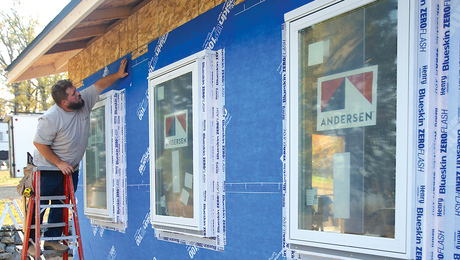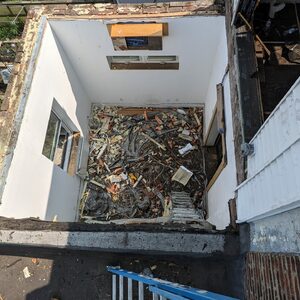Flow monitor for fuel oil
I have a building that currently has an oil fired boiler serving radiators.
Due to environmental issues I need to remove the underground fuel tank that feeds it, and am considering the options of replacing the inground tank with an above ground one, or installing either a propane or electric boiler.
As part of that I would like to figure out how much oil we are buring, and when we are burning it. I would like to then compare the fuel useage to the set points on the programmable thermostats, and the outdoor temperature.
Does anyone know of a good flow meter/data collector system I could install?



















Replies
I don't know a lot about this, but I do know that when I tried to find an accurate "flow" meter for our well (I was interested in water consumption and leak detection), I had a hard time.
But it seems to me that you have an advantage with the fixed capacity tank. With liquid fuel you might be able to install a float type meter. No?
I can recall, in my youth, seeing a flow meter that was a graduated sight glass with a ball in it. Not terribly accurate, I'm sure, and it certainly wouldn't keep a reccord.
What's your price range?
Here's a start, probably $1000 minimum for a system as a guess. http://jerman.com/oilmeter.html
One approach
If you feel comfortable relying on the nameplate rating of the boiler, maybe you don't need a flow meter--just measure the run times. Take a look at HOBO / Onset dataloggers--they have at least one that will record the amount of time that the control circuit is closed. If you know the firing rate of the boiler, the run time should allow you to reasonably approximate fuel usage.
You can use simple USB dataloggers like the UEI THL2 to capture the temperature information. You would probably have one outdoors to record outdoor temperature, and then one at each thermostat to capture the indoor temperature in each zone.
It sounds like maybe you are wanting to know which zone(s) are using the most, and/or when they are doing it. That will get a bit complicated, but with enough data you can probably come up with a rough analysis.
Just trying to accurately size the new boiler.
I figure if I could accurately monitor fuel flow, and the temperature differential inside to out, and the room temperatures in response to the heating system, I could then calculate how much energy the boiler is actually using, and a ball park efficiency.
I think the current one is grossly oversized, as it was installed prior to the last upgrade to the building, which included doubling the insulation, and installing low-e heat gain windows.
The desing operating temp on the boiler is 195-degrees, and we are currently operating it at about 145-degrees to help minimize short cycling of the recirc pumps. I have a drawer full of Hobo data loggers, that were bought to monitor concrete curing temps when we pour in the fall or winter.
I hadn't thought of just monitoring when the burner is on, and recording burn time. Not sure I trust the boiler plate data, but I do know the rating on the orifice, and the pressure to it. I cold probably rig up a way to determine the flow rate on the orifice, and then use the pump run time, and be close enough. And I think we have everything we would need in the shop..
Even if you can't calc the flow rate from first principles, you can measure how long the burner is on over a period of weeks & see how much oil is used from the tank in that time (using a dipstick and that obscure dipstick formula if necessary). That will let you calculate gallons per hour.
No way to use a dip stick.
The building was remodeled ten years ago, and part of that project was to install a wheel chair access ramp. (They also installed air conditioning, so I'm not sure why they didn't install heat pumps at the same time.)
Which ended up going over the top of the existing undergound tank. So, they put nineties on the vent and fill pipes and ran them about ten feet horizontally and then ninety up to the surface. No way to dip the tank. (Bad idea.)
The pipes have now settled, and slope down from the tank to the fill/vent points ten feet away. When you fill the tank, oil runs into the vent pipe, so that the system won't vent and is extremely hard to fill until that oil either purges out of the vent pipe. This results in spills on the ground. (Bad idea gets worse.)
So, we are now trying to fix the problem.
Sizing new boiler
I'm sure you can measure oil consumption by the existing boiler, and relate it to run times, indoor temps, and heating-degree days, but what you really need is a measurement of output. That's a bit different, in that you would need to measure temperature rise and fluid quantity, which is a different ball o' wax. Maybe you can ballpark the efficiency of the existing boiler closely enough to make it work using input to the existing boiler.
One place that chat about stuff like this (old boilers, steam heat, etc) is heatinghelp.com